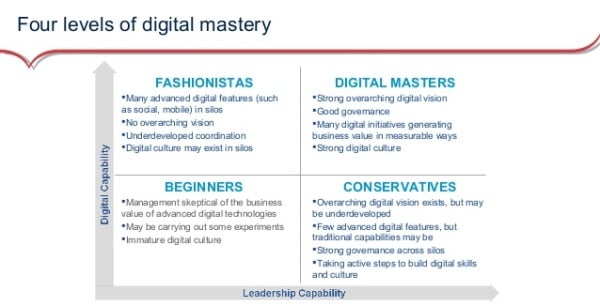 This week in my Creighton University course, ILD831 – Technology and Leadership, my students are exploring digital tools. They started by reviewing Jane Hart’s list of Top Tools for Learning and selecting different tools for each to research. In our Netvibes page this week, they will be posting:
This week in my Creighton University course, ILD831 – Technology and Leadership, my students are exploring digital tools. They started by reviewing Jane Hart’s list of Top Tools for Learning and selecting different tools for each to research. In our Netvibes page this week, they will be posting:
- Brief background on their selected tool
- How might it be used for their leadership situation (education, healthcare, business, non-profit, etc.)?
- What are downsides to using it?
They are also starting to read David Weinberger‘s Too Big To Know, and it will be interesting to see what aspects of their reading align with their tool research.
Viewing tools through the lens of leadership aligns with Westerman, Bonnet, and McAfee’s 2014 book, Leading Digital: Turning Technology into Business Transformation. In this book, the authors discuss the concept of Digital Mastery. In their viewpoint, digital masters excel in two dimensions. The first is digital capabilities -the “what” of technology. Technology is not an end to itself, but rather a means to get closer to customers, empower employees, or improve processes. The second dimension is leadership capabilities – the “how” of leading change. Interestingly, the authors suggest that this requires strong top-down leadership, with strong governance and coordination. The authors suggest that these two dimensions can be mapped as such:
I like how Westerman’s book gives equal weight to both digital capability and leadership capability. I am not sure I totally buy the idea that this means top-down leadership. I think that there is a difference between “strong” and “top-down”. I like how Harold Jarche describes it in his post this week “What is Connected Leadership“.
“Connected leadership is not given from above, as there is no top in a network. To know the work culture, connected leaders marinate in it. This cannot be done while trying to control the culture. Organizational and network resilience is strengthened when leaders let go of control. Connected leaders use compassion, empathy, and trust to influence networked people. Transparency eliminates the need for most traditional management control mechanisms.”
I agree with Westerman and his colleagues that leaders in this digital age view technology as a way to change the way they do business, whether that business is commercial, education, healthcare, or government. Strong leadership can still provide the vision for their organization, but as Jarche noted, also use compassion, empathy, and trust to influence the direction their entity is heading…and the culture of the organization.
So I am looking forward to the ideas my students surface this week!
{Graphics: Lachian Donald, Capgemini}
